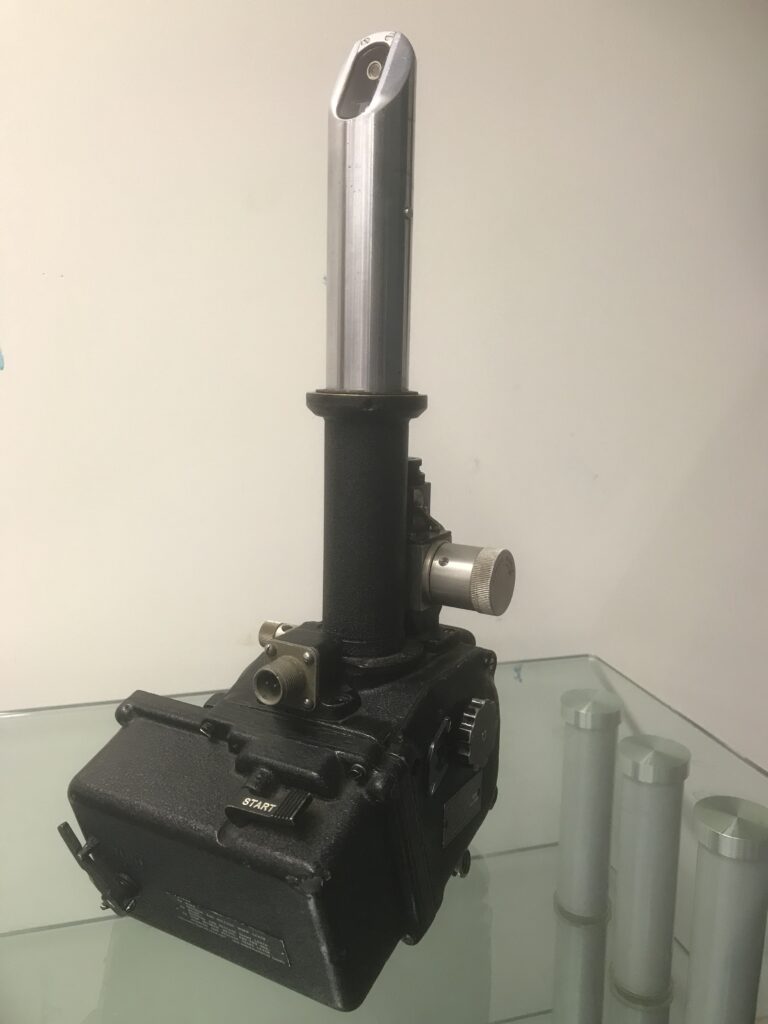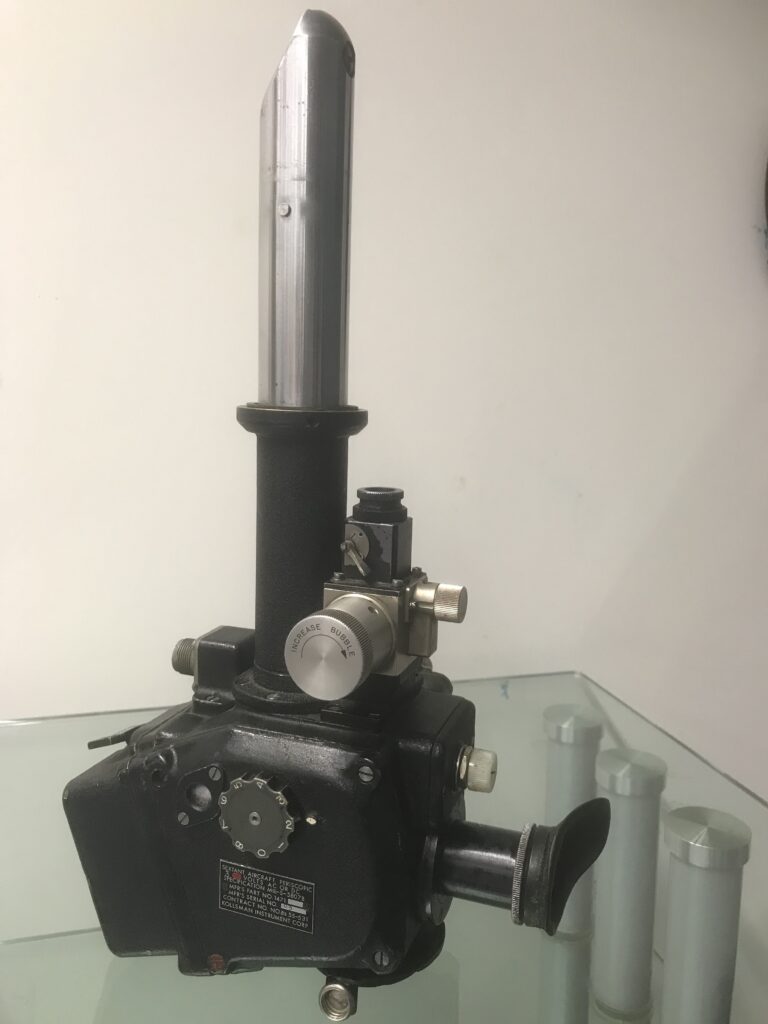Periscopic Sextant

 : Trans-Australian Airlines uses an ancient instrument in modern times
: Trans-Australian Airlines uses an ancient instrument in modern timesThe TAA/Australian Airlines Museum at Airport West in Victoria houses hundreds of thousands of artefacts and memorabilia which highlight the history of the airline and many of its technical and commercial innovations.
On display at the Museum is a unique instrument, a periscopic sextant.
It is a more complex form of the same device used to guide the early maritime explorers including Captain Cook, by using the principals of astral navigation.The story of this sextant, seen below, came about when TAA decided to purchase its first pure jet passenger aircraft, the Boeing 727-76, from the Boeing Aircraft Company in the USA.
The delivery flight to Australia from the Boeing factory in Seattle involved long overwater flights to Hawaii then onwards to Australia, but in 1964 the aircraft did not have navigation instruments that were compatible for use in Australia thus the standard American equipment was not fitted. This is how the periscopic sextant came into use.The solution was for Boeing to install a sextant mount, a small 25 mm hole with special seal in the roof of the fuselage just behind the cockpit door. This was common on aircraft sold to overseas airlines.
Prior to takeoff the upper silver part of the sextant was inserted into the mounting and fixed in place to position it outside of the aircraft.
The lower part of the sextant included a small viewer and various adjusting dials which allowed the navigation officer inside the cabin to take sightings of the sun and stars during the long flight and use the data to manually calculate the current position of the aircraft and subsequently provide any course adjustments to the pilot.
The procedure required three sightings, one minute apart, every hour during the flight plus calculations, all while travelling at 12 kilometres a minute!
After arrival in Australia the sextant was removed, the sextant mount sealed and Australian standard navigation instruments installed.
The ferry flight delivery process was repeated many times during the 1960’s and 70’s whenever TAA purchased jets from overseas.
The late 80’s and 90’s saw the same sextant again being used to take TAA’s older, early model aircraft back to the USA after they were sold to US airlines.
By the late 1970’s early 1980’s, technology in the form of the inertial navigation system (INS) had rendered the complicated art of astral navigation redundant.
Using satellite based information, the INS can provide all of the information required to guide an aircraft to its destination, therefore, the sextant and a navigator were no longer needed onboard the delivery flights.
This piece of TAA history now has pride of place among the technical displays at the TAA/Australian Airlines Museum.
Submitted by TAA/Australian Airlines Museum
